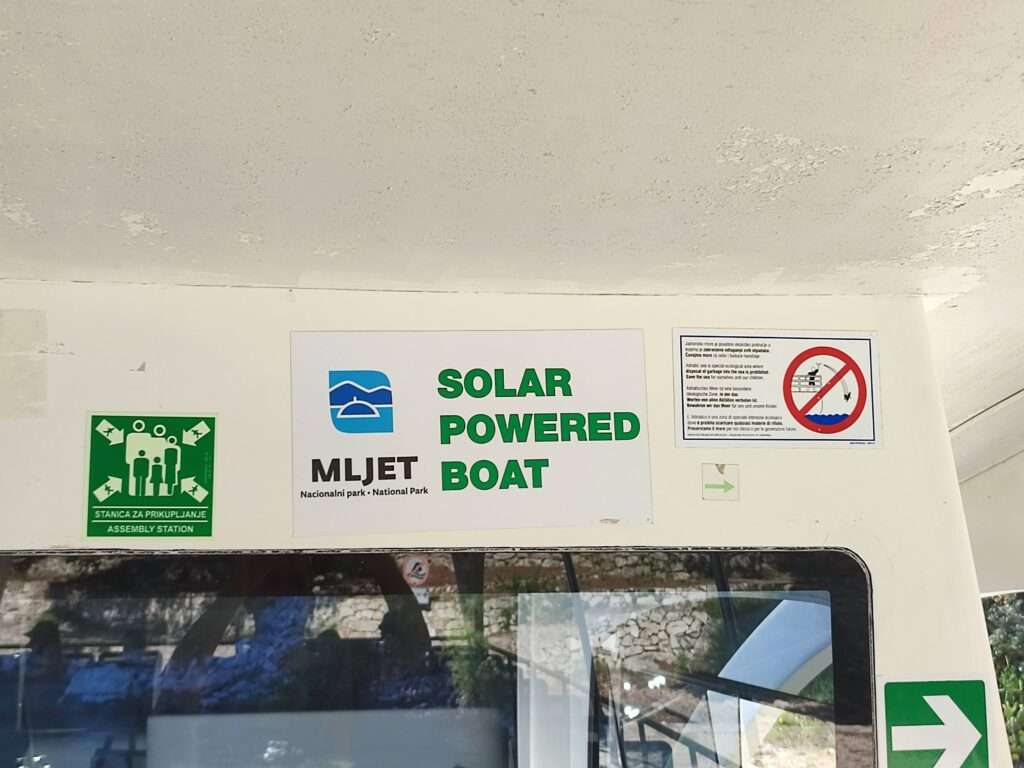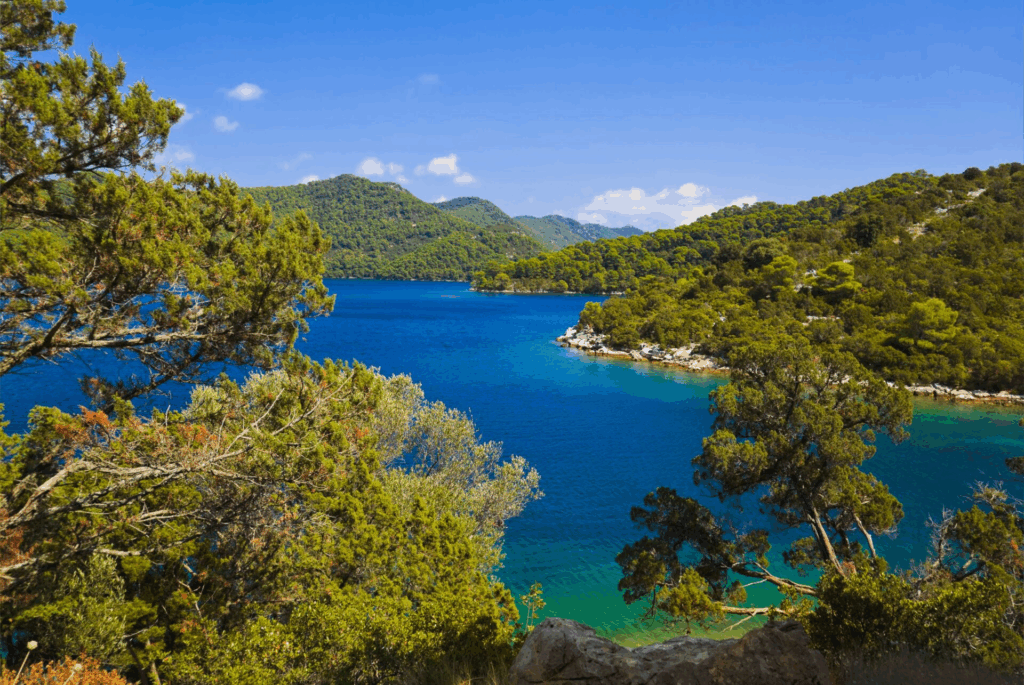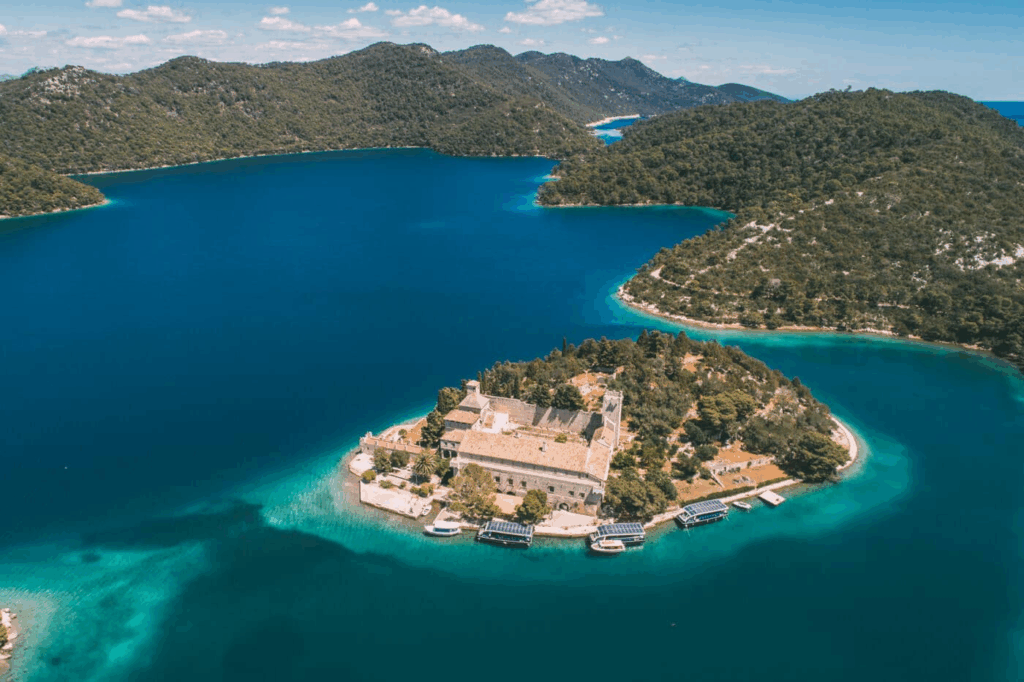Nestled in the southern reaches of the Adriatic Sea, Mljet Island remains one of Croatia’s most serene escapes. Often overlooked by mass tourism, the island enchants visitors with its ancient forests, tranquil saltwater lakes, and centuries-old monasteries. Designated as a national park since 1960, Mljet has long been a haven for nature lovers and those seeking quiet reflection amidst untouched landscapes.
What makes Mljet truly special today, however, is not just its natural beauty—but how it’s being preserved through innovative, sustainable practices. In 2025, the island stands at the forefront of eco-conscious travel, offering an experience that harmonizes exploration with environmental responsibility. One of the most transformative changes has been the rise of solar-powered boats, which glide silently across the turquoise waters, leaving no carbon footprint behind.

A Natural Paradise Reimagined
Known as Croatia’s greenest island, Mljet’s western region is protected under national park status. Here, two strikingly beautiful saltwater lakes—Veliko Jezero (Big Lake) and Malo Jezero (Small Lake)—lie nestled within dense pine forest. At the heart of Veliko Jezero rests the tiny islet of St. Mary, crowned by a 12th-century Benedictine monastery. The peaceful setting feels almost otherworldly, inviting visitors to slow down and immerse themselves in the tranquility of the surroundings.
While hiking trails and cycling paths weave through the island, there’s something uniquely meditative about exploring Mljet by water. For years, motorized boats have been a common way to tour the coast and lakes, but their noise and emissions disrupted the delicate balance of the environment. Now, thanks to advancements in solar technology, travelers can enjoy the same stunning views—and even more—without compromising the island’s ecological integrity.
The Rise of Solar Boating
Solar-powered boats are quietly revolutionizing how we experience Mljet. These vessels harness energy from the sun, operating without fuel or noise pollution. Companies like Sea Breeze and others listed on platforms such as Viator and TripAdvisor now offer full-day excursions powered entirely by the sun. Their itineraries often include stops at Odysseus Cave—a dramatic sea cave said to be linked to Homer’s epic tales—St. Mary’s Islet, and secluded beaches reachable only by boat.
These tours are more than just environmentally friendly; they’re also deeply immersive. With electric bikes often included in the packages, guests can seamlessly transition between boating and land-based adventures, creating a well-rounded journey through Mljet’s diverse terrain.
Why Go Solar?
Choosing a solar-powered boat isn’t just a trend—it’s a meaningful decision with lasting benefits:
Eco-friendliness lies at the core of these vessels. Without fuel emissions, they protect marine life and air quality, significantly reducing the carbon footprint compared to traditional boats. Their silent operation enhances the natural experience, making them ideal for wildlife observation and minimizing disruption to underwater ecosystems.
From a technological standpoint, solar boats represent the future of maritime travel. They’re part of a growing movement toward cleaner, quieter, and smarter transportation solutions. Plus, with lower maintenance needs and no fuel costs, they provide a more cost-effective option for operators in the long run.
Planning Your Eco-Friendly Escape
Most solar boat tours to Mljet depart from Dubrovnik or Split, both major hubs along the Croatian coast. Whether you’re looking for a private charter or a shared group adventure, there are options to suit different preferences and budgets. Many tours include meals, snorkeling gear, and expert guides who share insights into the island’s history and ecology.
Given Mljet’s rising popularity among eco-conscious travelers, booking in advance is highly recommended—especially during the summer months when visitor numbers peak. While the island still maintains a low-key atmosphere, increased awareness around sustainability means demand for green travel options is growing fast.
Looking Ahead: The Future of Mljet’s Sustainability
As Mljet continues to welcome visitors, its commitment to sustainability is shaping a promising future. Aligned with Croatia’s broader “Strategy for the Sustainable Development of Tourism until 2030,” the island is focusing on environmental preservation, local community support, and balanced regional tourism development.
One key area of growth is the expansion of the solar fleet. Tour operators are investing in larger, more versatile boats—from sleek water taxis to spacious family charters—while maintaining strict limits on visitor numbers inside the National Park. Charging infrastructure is also evolving, with eco-conscious docking stations powered by additional solar arrays on land.
Innovations in battery storage and renewable energy systems will further enhance the efficiency and reliability of these vessels. As technology progresses, Mljet could become a blueprint for how islands worldwide can transition to clean energy transportation.
Beyond boating, waste management and resource conservation remain top priorities. Initiatives promoting zero-waste tourism, improved recycling systems, and reduced plastic use are gaining traction across the island. Water conservation efforts—including rainwater harvesting and efficient wastewater treatment—are also being integrated into accommodations and public facilities.
Protecting biodiversity is another cornerstone of Mljet’s sustainable future. Marine conservation programs monitor coral reefs and endangered species, while terrestrial projects aim to manage invasive animals and promote reforestation with native flora. Visitor education plays a vital role here, with interpretive centers and guided walks helping tourists understand the fragility and value of the island’s ecosystems.
Local communities are central to this vision. By supporting small businesses, encouraging seasonal diversity in tourism, and certifying eco-friendly accommodations, Mljet ensures that economic benefits stay within the island. This approach not only preserves cultural traditions but also strengthens resilience against over-tourism.
Smart tourism technologies are also being explored to manage visitor flows and minimize environmental impact. From real-time monitoring systems to digital tools that streamline bookings and information sharing, these innovations help maintain Mljet’s peaceful character while enhancing the visitor experience.
Final Thoughts
Mljet Island is more than just a destination—it’s a living example of how travel can evolve responsibly. With its breathtaking scenery, rich history, and forward-thinking sustainability efforts, it offers a unique blend of relaxation, adventure, and conscious exploration. Whether you’re gliding across the lake in a whisper-quiet solar boat or walking through ancient forests, Mljet reminds us that the best journeys are those that leave nothing behind but memories.
Related Content
- National Parks in Croatia – viravira.co Blog
- Solar-Powered Catamarans Sail Through the Island of Mljet – Total Croatia
- Mljet island using solar catamarans as eco-friendly means of transport | Croatia Week
- Mljet lakes get solar-powered ships made in Croatia
- Mljet goes green with solar powered boats – The Dubrovnik Times




